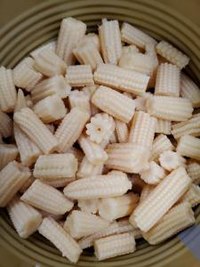
Photo from wikipedia
The effect of root anchorage on corn stalk is the main cause of difficulties in stalk lifting and ear picking of lodged corn. To quantify the forces on the stalks… Click to show full abstract
The effect of root anchorage on corn stalk is the main cause of difficulties in stalk lifting and ear picking of lodged corn. To quantify the forces on the stalks caused by root anchorage in corn harvesting, a root force measurement system was designed and applied in this study. The bending moment and torsional moment on the upright and lodged corn stalks were measured in corn harvesting with the designed system and the results were compared with the manually measured failure boundaries. The manually measured results showed bending moments to push down the upright stalks, to lift the lodged corn stalks, and to slip the lodged corn stalks were 35.12, 23.33, and 40.36 Nm, respectively, whereas the torsional moments needed to twist off the upright and lodged corn stalks were 4.02 and 3.33 Nm, respectively. The bending moments that the corn header applied to the upright, forward lodged, reverse lodged, and lateral lodged corn stalks were 10.68, 22.24, 16.56, and 20.42 Nm, respectively, whereas the torsional moments on them were 1.32, 1.59, 1.55, and 1.77 Nm, respectively. The bending force was the main factor that broke the root anchorage and influenced the stalk movement of lodged corn in harvesting. By analyzing the bending moment curves on the lodged corn stalks, it was proposed that for the harvesting of corn lodged in the forward, reverse, and lateral direction, the corresponding harvester header improvement suggestions are enlarging the size of pins on the gathering chains, reducing the speed of gathering chains, and lengthening the snouts with a sleeker surface, respectively. This study provides base data for the root anchorage effect on lodged corn and provides references for the improved design of the corn harvester header.
Journal Title: Frontiers in Plant Science
Year Published: 2022
Link to full text (if available)
Share on Social Media: Sign Up to like & get
recommendations!